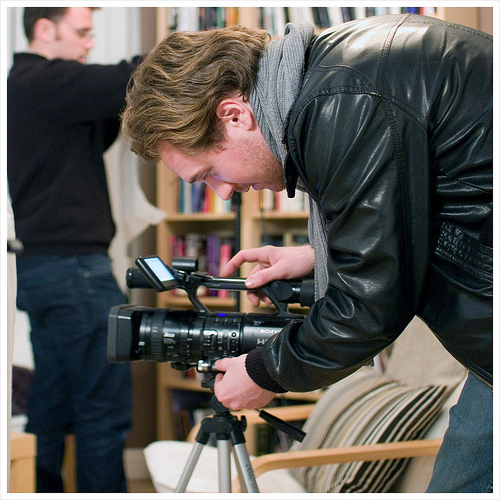by Mike Sessler, ChurchTechArts.org
It’s Friday and that must mean it’s time to go back to class. This week, I’m reviving a post I wrote a long time ago. I’ve not written much on video lately, which is a shame because it’s what I spent most of my professional life doing. So here are a few tips on improving the quality of your videos with the use of a tripod.

photo © 2009 jsawkins | more info (via: Wylio)
Have you ever had this experience? Someone hands you a tape that was shot on a missions trip, or student event, or other ministry outing. You are requested to go through said tape and “make a video.” This happened to me some time ago. It was a student missions trip to New York City. Since it was student ministries, we sent them off with a small, Digital-8 camcorder. As I scanned through the 2 hours of footage, looking for a shot (yup, a shot), I thought about the need for a tripod. You see, all the footage was shot with the camera moving. It never stopped. Just watching it gave me vertigo. Out of 2 hours, I found less than 3 minutes of usable footage. Now, this is not to pick on our intrepid camera man here, but let’s talk about how to avoid this.
Here’s the deal—watch some TV, or a few films and here’s what you’ll find (save the “reality shows”): You’ll find well composed, static shots. Most of the time, the camera doesn’t move and if it does, it’s on a tripod, SteadiCam, dolly or crane. If and when it does move, it moves slowly and smoothly. Doing this takes practice and good equipment. A while back, I wrote a post called, Being Excellent with Less. In that post I suggested that if we don’t have the personnel or equipment to do a certain task, we should scale the task back to the point where we can achieve excellence. Don’t have a $50,000 Chapman crane for your camera? Then put it on a tripod and work with what you have. Don’t have a tripod? Get creative—the most usable footage we got from the students was when the camera was set on a table and the students shared their experiences.
If you don’t have a tripod, you really should get one. They’re not that expensive in the grand scheme of things, and I would suggest it will make the second biggest improvement in your videos (microphones are #1). For a few hundred dollars you can pick up a tripod that will deliver excellent results with smaller DV and HDV cameras. Check out some of the lower-cost offerings from Manfrotto. They’re not nearly as good as my favorite Vintens, but they’re a whole lot better than trying to handhold your shots. If budgets are really tight, you could even use a super-cheap photography tripod; though they won’t pan and tilt very smoothly, it will at least hold your camera steady.
I’m guessing a lot of the readers of this blog don’t have a bunch of professional experience shooting videos, yet you are being asked (or are volunteering) to make them for an audience ranging from a few hundred to a few thousand. If that’s the case, how can you go about improving your work? First, realize there is very little truly original video out there. For the most part, there are accepted rules, and methods that generate good results. So watch some professionally produced programs (they’re free on TV!). But don’t watch them for the story line (at least not for this exercise), watch them for the technical production details. How did they frame the shot? How does the camera move? What angles did they use? How is it lit? Where was the camera placed in the scene? How do the people in the program interact with the camera?
I’ll let you in on a secret: professionals do this all the time. I once cribbed a really cool visual effect from CSI: Miami for use in a video for one of our students. I was watching a show on Discovery channel and saw a lower third title treatment I liked and created a similar look for another video. When I watch a film with really good cinematography, I will watch it again and study what the cinematographer did. Then I look for opportunities to use some of those techniques.
Here’s the why: The people sitting in our churches every week watch TV too, and they have high expectations. Imagine a couple coming into a church for the first time in many years only to see a poorly produced video that bounces all over the place, with poor audio, bad color and is poorly projected. Will that keep them from returning? I don’t know—but it can’t help. Remember, our job in the Technical Arts is to remove all barriers to an authentic worship experience. That’s why it matters.
